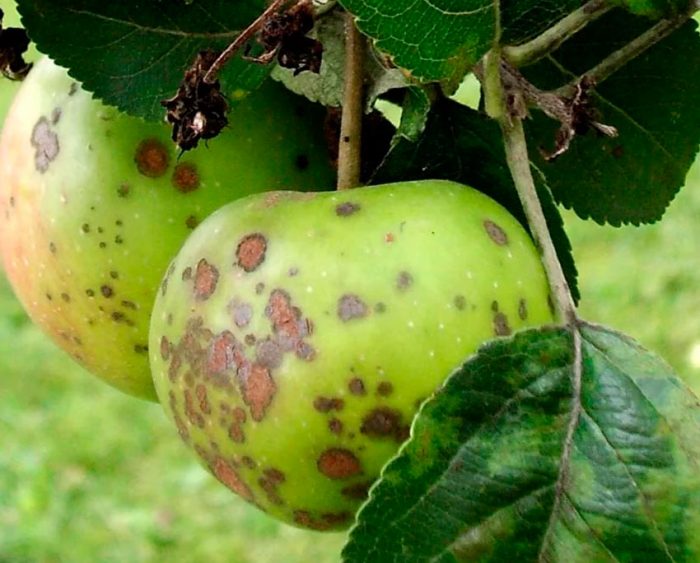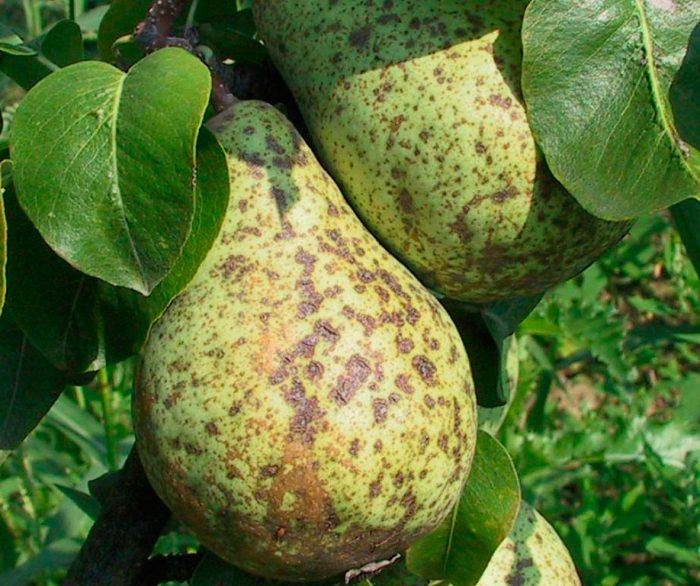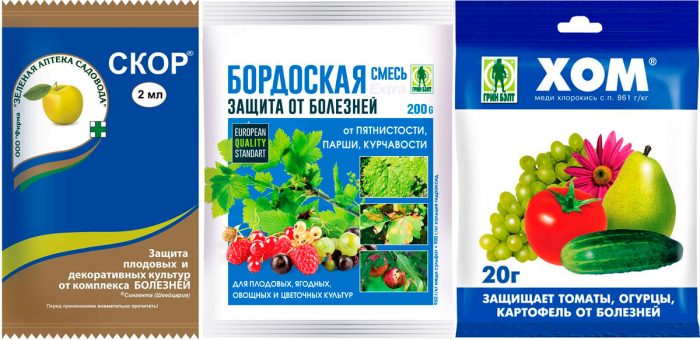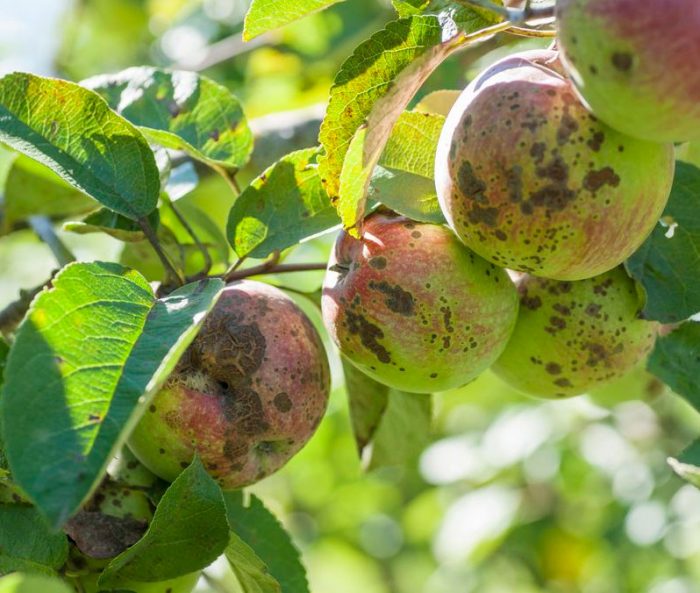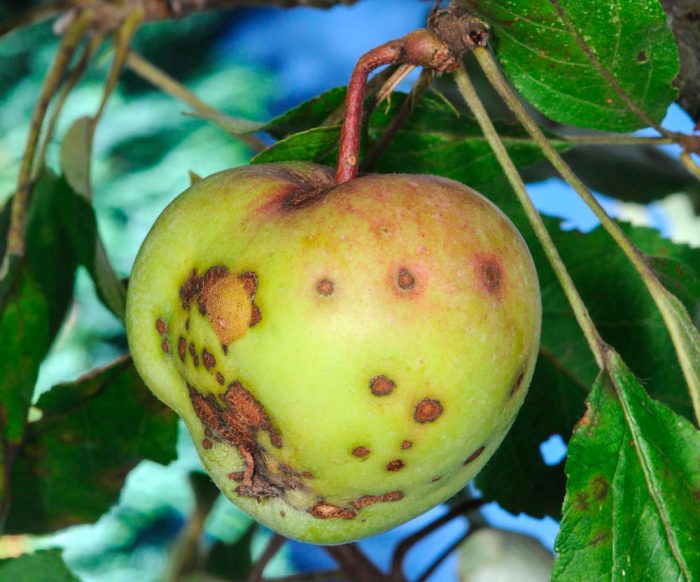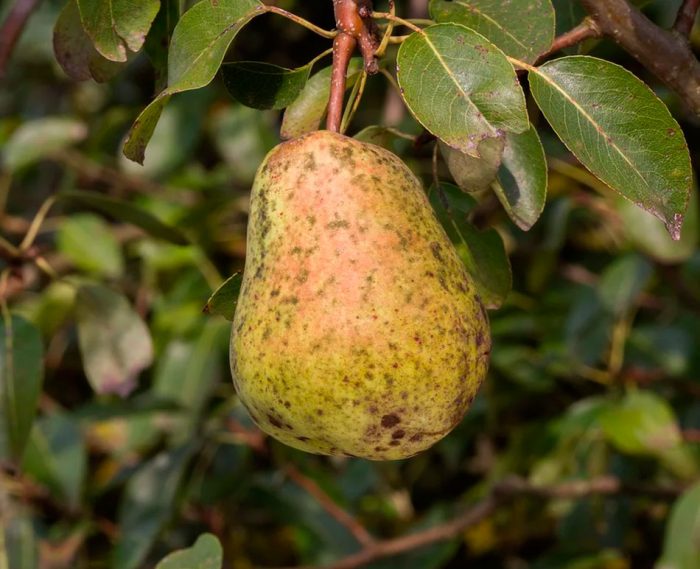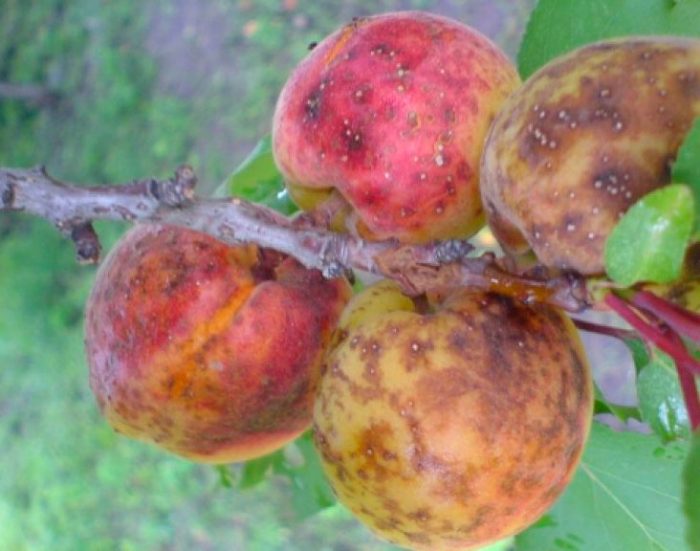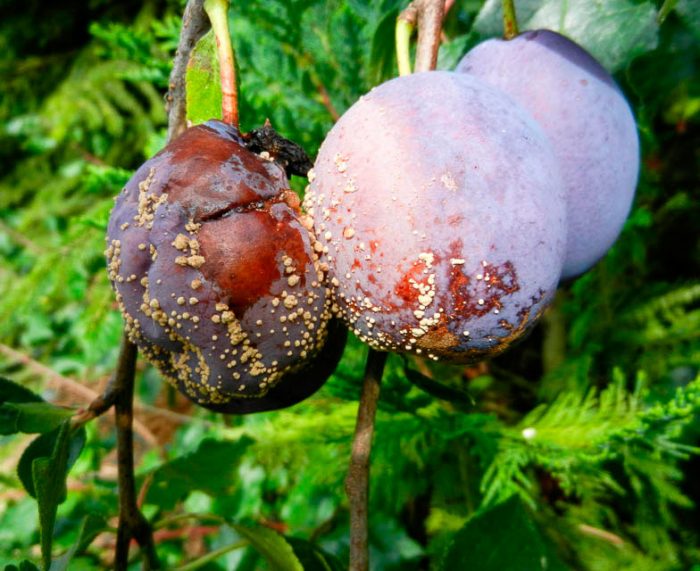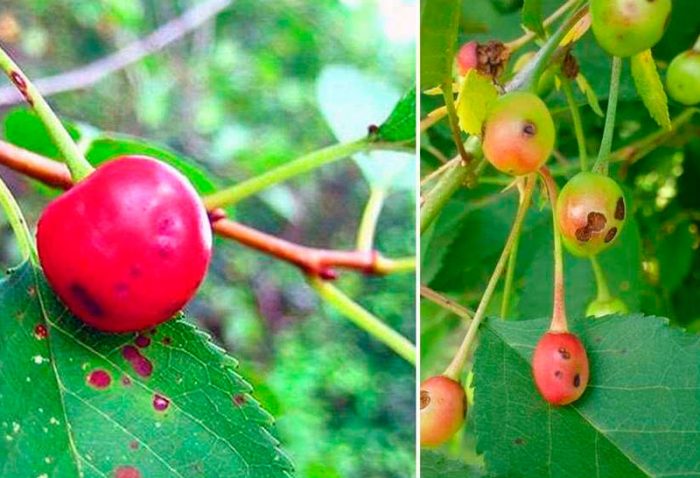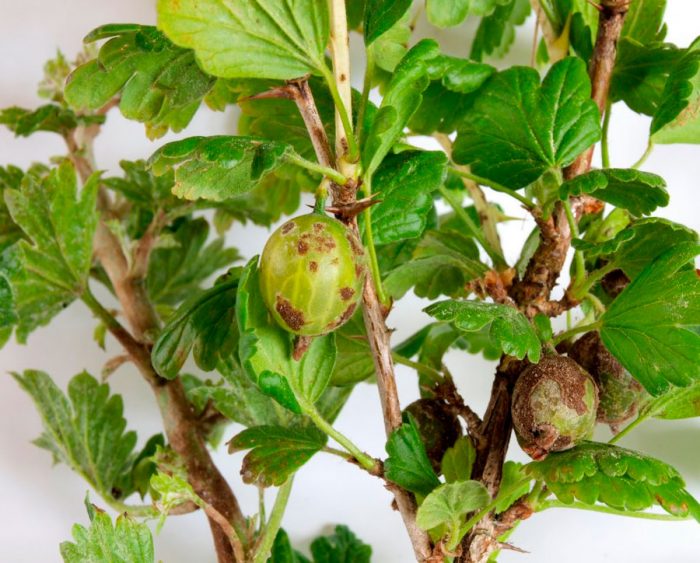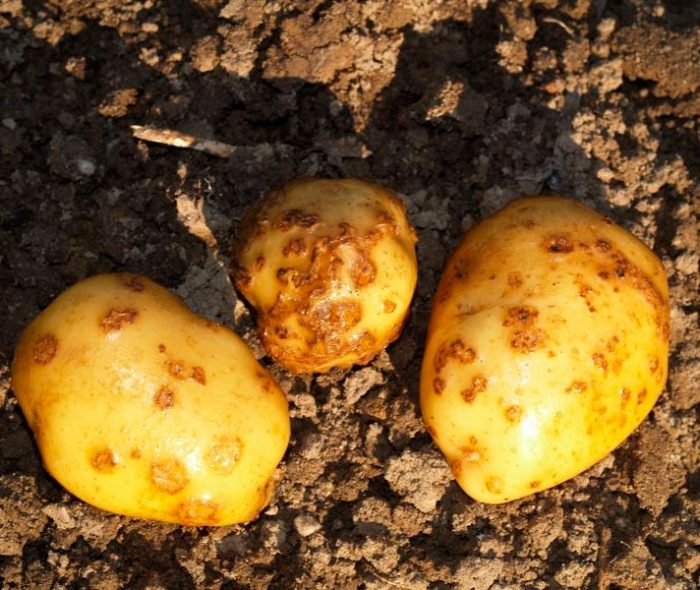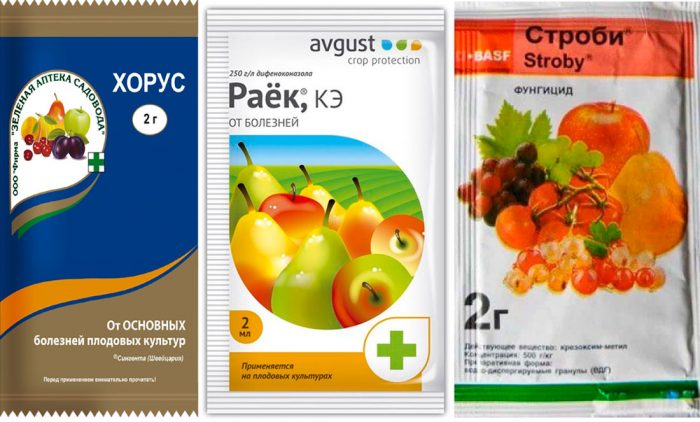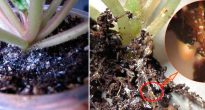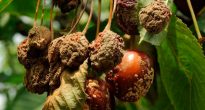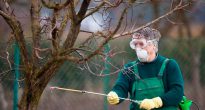Scab is an infectious disease that poses great danger to many crops. The causative agents of this disease are pathogenic microscopic fungi, bacteria and actinomycetes. In a plant affected by scab, deformation of the surface of leaf plates, tubers, stems and fruits is observed, which has an extremely negative effect on yield. The most widespread occurrence of this disease is observed in temperate climates. There is scab, because of which shrubs and trees suffer, and there are also types of such a disease, which can affect beetroot and potato roots.
Content
Features of the disease
Experts have noticed that all cultures are affected by various scab pathogens. For example, scab on an apple tree will never spread to potatoes or pears. However, all types of such a disease have common symptoms. When examining a sick plant, the following symptoms of the disease can be detected: the skin begins to peel off, pustules, specks, warts and ulcers form on fruits, tubers, shoots, leaf plates, stems and flowers. If the plant is very strongly affected by scab, then there is drying and flying of the foliage, a violation of the water balance of the culture, and this is very bad for the fruiting of both the current and future seasons. Also, diseased flowers and buds fly around, and the fruits become ugly due to this disease. In addition, during storage, such fruits begin to rot, since it is very easy for rot pathogens to penetrate them through cracks formed on the surface of the peel due to scab.
A culture is affected by such an infectious disease only under certain conditions. For example, high soil moisture. This disease cannot develop without moisture. The fungus is activated when the snow cover melts in spring, while the air temperature should be about 12 degrees. During the summer, the scab begins to develop if it often rains or there are frequent fogs and dew. And an overly thickened planting contributes to the development of the disease. In those garden plots where many trees of the same species grow, the disease spreads rapidly, especially if the soil surface between the rows is overgrown with weeds, through which, like on a bridge, spores are transmitted from one plant to another.Also, the rapid spread of scab in the garden is observed with genetic monotony, for example, when trees of the same species grow nearby each other. For example, if a plum or a pear is planted near a scab-affected apple tree, they are unlikely to "catch" such a disease from the apple tree. And if another 2-3 apple trees grow near the diseased apple tree, then all these plants after some time will be affected by scab. Also, some plants are more likely to be affected by scab due to the susceptibility of the variety. So, experts found out that some varieties are less likely to get scab, while others more often (because of their high susceptibility). To date, breeders have managed to obtain varieties that are highly resistant to scab.
Scab control
How to treat scab
Chemicals deal with scabs most quickly and effectively. And in some cases, pesticides are the only hope for saving a sick plant. For the treatment of trees, such fungicidal preparations are used as: But, Skor, Bordeaux mixture, Hom, Fitosporin, etc.
In order to get rid of the scab, several treatments are required, and it is extremely important to choose the right timing for spraying the plants. And in order to do this, you need to know how long the beginning and end of the spread of ascospores of the fungus falls. The first time the plants are sprayed against this disease in the green cone phase, again - in the pink cone phase, and the last most important treatment is carried out after the petals have flown. In the summer, cultures for this disease are treated with a break of 15–20 days. If the season is rainy, due to which the level of humidity rises regularly, then the plants will have to be sprayed from scab at least 5 or 6 times.
Prevention
Many gardeners have learned from their own experience that it is much easier to prevent the development of scab by regularly taking preventive measures than to fight the disease later.
There are certain agronomic techniques that are very effective in controlling scab. For instance:
- It is necessary to clean the soil surface under trees and shrubs in time from loose leaves, and also to dig the soil in the near-trunk circles.
- In order to timely notice the onset of the development of the disease, during the growing season, it is necessary to carry out frequent and regular inspections of trees. Fruits and foliage that look suspicious are immediately cut off and destroyed.
- Do not forget to thin out the crown of shrubs and trees every year, since when they thicken, scab develops very quickly.
- Plants are recommended to be fed on foliage using fertilizers based on phosphorus, potassium carbonate and silicon, for example: Opty Sil and Solfan PK.
- When leaf fall ends in autumn, shrubs, trees, as well as the surface of the soil under them, are sprayed with a solution of urea (7%), ammonium nitrate (10%) or Nitroammofoski (10%). When spraying plants with these preparations, the air temperature should be at least 4 degrees. Thanks to this treatment, not only will most of the pathogenic microbes and pests be destroyed, but also the bushes and trees will receive additional nutrition.
Scab on trees
Apple scab
Apple trees are most commonly affected by scab. First, scab of foliage develops: specks of olive color are formed on the front surface of the affected leaf plates, which are covered with a velvety bloom containing spores of the fungus. As the disease progresses, foliage begins to fly around. Later, damage to the fruits is observed: specks of brown color are formed on their surface with a border of a lighter shade, on which a velvety bloom appears. This plaque disappears over time, and under it you can find cork tissue.Further, there is an increase and cracking of such cork specks, and often they join together. The shape of the affected fruits becomes irregular and ugly, and they themselves are very poorly stored.
The following apple varieties are most susceptible to scab damage: Grushovka Moskovskaya, Slavyanka, Borovinka, Antonovka, Papirovka and Bellefleur-Kitaika. The most resistant to the disease are such varieties as: Pepin saffron, Jonathan, Kitayka aniseed, Rodnichok, Soyuz, Fortuna, Juno, Dawn, Fairy, Red Amber, Golden Summer, Lyubava, Vasilisa, Orpheus, Margo, Nocturne, Talida, Yekaterinodarskoe and dr.
To cure a sick apple tree, agrotechnical measures should be combined with spraying trees with special pesticides. Sick stems found on the plant must be cut out, and they also make sure that the near-stem circle is always clean, for this, remove and destroy loose fruits and foliage in a timely manner, and remove weeds. In the autumn, a compulsory digging of the trunk circle is carried out. Thinning and sanitary pruning of trees is carried out in early spring.
In order to prevent scab, apple trees are sprayed shortly before sap flow begins, for this they use a solution of Nitrafen emulsion (for 1 liter of water 20 grams) or DNOC (for 1 liter of water 10 grams). The first spraying of an apple tree for medicinal purposes is carried out in the green cone phase with a solution of Bordeaux mixture (1%), and the second time the tree is treated in the pink bud phase, for this, a Scor solution is used (2 milligrams per bucket of water). If you did not have time to spray the plant on dormant buds with Nitrafen or DNOC in a timely manner, then it is recommended to carry out a “blue” spraying with a solution of Bordeaux mixture (3-4%) in the green cone phase, and if desired, the treatment in the pink bud phase can be omitted in this case. Then apple trees are sprayed from scab regularly with a break of 15–20 days, for this, they alternately use such agents as Tsineb or Kaptan in the form of an emulsion (5 g per 1 liter of water), Khom (4 g per 1 liter of water) and colloidal sulfur in the form of a suspension (10 g per 1 liter of water). When at least 30 days remain before harvesting, it is necessary to stop all spraying with pesticides. In those years when there is a massive infestation of apple trees with scab, after harvesting the plants are sprayed once more, using a solution of Tsineb (0.5%) or Bordeaux mixture (1%).
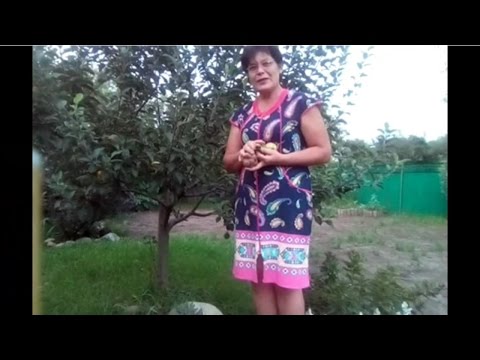

Watch this video on YouTube
Scab on a pear
Symptoms of scab damage to a pear are almost the same as those of an apple tree (see above). However, in a pear, spots on the foliage form on the lower surface, and in addition to the fruits and leaf plates, young shoots are also affected by such a disease. The scab pathogen hibernates on tree branches, as well as on loose leaves under the plant.
The first symptoms of scab appear 15–20 days after the buds open. In the event that the tree was affected by the disease early (in the spring or in the first summer weeks), then the spots that appeared on the foliage and fruits will be large. And if the tree is infected with scab later, then the spots will be smaller. Late appearance of scab is observed when wet weather is present before harvesting. In this case, the spots that appear are very small, and they are almost invisible, however, during storage they will certainly appear. These fruits are called "warehouse pear". On diseased stems, many very small bubbles appear on the bark, while their surface becomes rough and begins to peel off.
The most susceptible to scab damage are such pear varieties as: Forest Beauty, Bergamot Mlievsky, Sapezhanka and Winter Bere Ligel. The following varieties are relatively resistant to this disease: Bere Gardi, Bere Ardanpon, Bere Bosch, Mlievskaya autumn, Lyubimitsa Klappa, Vrodlyva, Vyzhnitsa, Etude, Trembita, Zolotovorotskaya, Stryiskiia, etc.
In order to cure scab-affected trees, it is imperative to timely clean the soil surface under them from loose leaves and fruits. In spring, they carry out obligatory pruning in order to thin out the crown and remove all diseased and dried branches that are destroyed by fire. In autumn, the site is cleaned of loose leaves and fruits, which are also burned.To destroy the causative agents of the disease that winter in the soil of the trunk circle and in the bark of the plant, in late autumn and at the beginning of the spring, they dig up the ground under the pear, and spray the tree and soil under it with a solution of Nitrafen (3%) or DNOC (1%). To process one hundred square meters, you will need 2 buckets of solution. In spring, the first treatment, called "blue" spraying, of pears with scab is carried out in the green cone phase, for this use a Bordeaux mixture solution (3%). Then the plant is sprayed in the pink bud phase and at the end of flowering, for this they take a solution of the Skor preparation (2 grams per bucket of water). When 1.5–2 weeks pass from the moment of foliage coarsening and again after 20 days, pears are sprayed with a solution of one of the following agents: Hom, Kaptan, Skor, Tsineb, colloidal sulfur and other preparations of similar action.
Peach and apricot
Stone fruits are affected less often by scab than pome crops, but still this disease is dangerous for them. With high humidity against a background of moderate air temperatures, the likelihood of apricot and peach damage by scab increases. When the air temperature rises to 30 degrees, the disease begins to develop much more slowly.
The first symptoms of scab on apricot and peach fruits are spots with a fuzzy outline of a greenish-brown color. Over time, darkening and growth of spots is observed, a velvet bloom of a black or olive shade appears on their surface, while their borders become clearer. If the plant is very badly affected, then the spots join together and form a crust. There is a slowdown in the growth of fruits, ulcers and cracks form on their surface, through which pathogens of fruit rot can penetrate into them. Often, the affected fruits fly around. In diseased stems, there is a lag in development, and on the lower surface of the affected foliage, many blurry specks of greenish or brown color appear. The most susceptible to scab are such varieties of apricots as: Red-cheeked, Shalakh and the entire “pineapple” group.
For spraying trees on dormant buds for the purpose of prophylaxis, a solution of Bordeaux mixture (3-4%) or another agent containing copper is used. The plant is sprayed directly from the scab in the first decade of June, and Skor, Horus or Kaptan is used for this (strictly follow the instructions on the package). After 15 days, re-spraying is carried out. Later treatments will not give the expected effect, however, after all the foliage has flown from the apricot in the fall, it can be sprayed with a solution of Bordeaux mixture (1%). Fungicidal preparations containing copper are most effective against scab on apricot. And in order to protect the plant from this disease, one should not forget about the rules of agricultural technology of this culture.


Watch this video on YouTube
Plum
Scab damage to the plum tree occurs under the same conditions as in the case of other stone fruit crops, and the same symptoms of the disease also appear. In this regard, the plum should be treated in the same way as the apricot:
- the first time the plant is treated in the spring on dormant buds (“blue spraying”);
- in the first decade of June, treatment with a solution of Horus or Skor is carried out, after 15 days, repeated spraying is necessary;
- when all the leaves fly around from the plant in the fall, it is treated with a Bordeaux mixture (1%).
Cherry
Like other stone fruits, cherries rarely get sick with scab. But if the plant is still damaged by this disease, then it is not the scab itself that will harm it most, but pathogens of various rot, which easily penetrate the cracks in the fruits formed due to the disease.In this regard, in order not to lose the harvest and protect cherries from disease, one should not neglect preventive treatments, which begin to be carried out from early spring with the same means and according to the same principle as in the case of apricot.
Fruit trees
Citrus crops can also be affected by scab, but in the middle latitudes, oranges, lemons and tangerines are not grown by gardeners in their garden area. Cherry plum, quince, peach and cherry can also get scab, and you can cope with the disease in the same ways and in the same time frame as in the case of pear, apple and apricot. Do not forget about preventive measures, which are almost the same for all garden trees.
Scab treatment
Gooseberry
Gooseberries are also prone to scab damage. However, the symptoms of this disease on such a shrub are often confused by gardeners with signs of powdery mildew, but these are completely different diseases. That is why, before proceeding with the treatment of the bush, try to compare all the available signs of the disease to be sure that it is a scab.
To prevent the plant from getting sick with scab, do not forget to regularly carry out preventive spring treatment on not yet swollen buds. For this procedure, a urea solution (7%) is used, and note that after spraying, both branches and buds and the surface of the soil under the plant should be well moistened with the agent. When leaf fall ends in autumn, the ground near the gooseberry is cleaned of loose leaves and the trunk circle is dug and re-sprinkled with a urea solution.
If the bush was nevertheless affected by scab, then it is sprayed on the swollen buds with a mixture of such agents as Horus and Aktara or a solution of Bordeaux mixture (2-3%). After 30 days, re-spraying with Aktara and Horus is carried out.
Currant
Compared to gooseberries, currants are affected by scab much less often. However, experts do not advise taking risks and recommend taking all the necessary preventive measures. Since gooseberries and currants are related crops, the same methods and preparations are used to combat scab. But even in this case, before proceeding with processing, you should make sure that the plant is definitely sick with scab, and not powdery mildew.
Scab on potatoes
Potatoes can also be affected by scab, like fruit trees. In this case, the surface of the tubers most often suffers, because of which they become ugly, and the seed quality and taste of such potatoes greatly deteriorate. In this case, the affected root crops cannot be stored for a long time. If the potato is very badly affected, then you cannot use it for food.
Those areas where scab-affected bushes grew are highly not recommended for growing potatoes for 4 or 5 years (at least). This culture can be affected by the following types of scab: common, lumpy (oosporosis), black (rhizoctonia), silvery and powdery. In more detail about each of the types:
- Common scab... On the surface of the tubers, not very deep small ulcers are formed that have an irregular shape. Over time, the spots increase, they connect to each other, and a cork formation appears on their surface. If you dig out a sick potato, then on its surface you can see a cobweb bloom, but as soon as the tubers dry up, it disappears.
- Powdery scab... It appears if pathogens enter the roots, tubers and stolons through mechanical damage or eyes. On the surface of the roots, the formation of galls is observed, which are irregular growths of white color, which become darker as the disease progresses. And on the tuber, many warty pustules appear, which eventually become ulcers with a dusty brownish mass.During storage, diseased potatoes are often damaged by dry rot or late blight.
- Silvery scab... You can understand that potatoes are sick during the harvesting of tubers or during storage. On diseased tubers, poorly distinguishable matte specks of various sizes and shapes of a brownish tint are formed. The disease begins to develop actively closer to spring. At this time, the affected tissue on the tuber acquires a metallic sheen, and it looks a little depressed inward. If the potato is very sick, then it loses a large amount of moisture, due to which the skin becomes wrinkled.
- Lumpy scab (oosporosis)... The defeat of tubers occurs in the ground, during their active growth, but it is possible to understand that they are sick only in the storage. Round pustules appear on potatoes, which are colored in the same shade as the peel. These pustules are convex, depressed, or flat. Over time, they increase and form areas that are outwardly similar to late blight, but in this case there is no rot under the skin.
- Black scab (rhizoctonia)... This type of scab that attacks potatoes is the most dangerous. Because of it, the gardener can lose up to 20 percent of the crop. Because of this disease, tubers die, twisting of the apical leaf plates is observed, and mold appears on the root parts of the bush. And because of it, the stems of the bush can rot and die.
In order to prevent the defeat of potatoes with this disease, you need to plant only completely healthy planting material of high quality. Just before planting, do not forget to treat the tubers with a solution of Rovral, Fito Plus or Aquaflo. The addition of manganese, boron and copper to the soil can help reduce the likelihood of scab damage to the plant. It is also very important, in order to prevent such a dangerous disease, not to forget about the rules of crop rotation. So, on the site it is recommended to alternately grow potatoes and plants belonging to the legume family. And in the event that you cannot plant potatoes in a new area every year, then be sure to refuse to apply fresh manure to the soil.
It is recommended to acidify the alkaline soil on the site with a solution of ammonium sulfate (2 tbsp per bucket of water). With this solution, the soil on the site is shed during the flowering period of the bushes, and 1 liter of the mixture is consumed per plant. When about 15 days remain before harvesting, it is recommended to mow the tops, thanks to which the peel on the tubers will become stronger. During the formation of buds, spray the bushes with a solution of Zircon, this will not only stop the development of scab, but also contribute to an increase in yield. After 15–20 days, plants are treated with Phyto Plus (1 sachet for 3 liters of water), due to this, the degree of infestation of tubers with scab will decrease. And experts also advise choosing for cultivation those varieties that are most resistant to scab, for example: Aspia, Skoroplodny, Alpha, Lady Rosetta, Mentor, Nicolas, Prevalent, Patrones, Element, Polyana, Yavir, Vesta, Dara, Rakurs, Tiras , Riviera, Lyubimets, Reserve, Spring, Bulletin, Varmas, Ramensky, Vilnya, Vyatka, Zhukovsky early, Bezhitsky, Bryansk novelty, etc.


Watch this video on YouTube
Scab preparations
To cure a plant affected by scab, fungicidal preparations belonging to the 3-4 class of hazard are used, since they are not able to form persistent compounds, penetrate the skin or accumulate inside the fruit. Which means to choose in this or that case depends on various factors and on the personal preference of the summer resident. However most often, the disease is fought with drugs such as: Horus, Skor, Raek, Stroby, Abiga-Peak, Fitoflavin, Bordeaux liquid and copper sulfate.


Watch this video on YouTube

